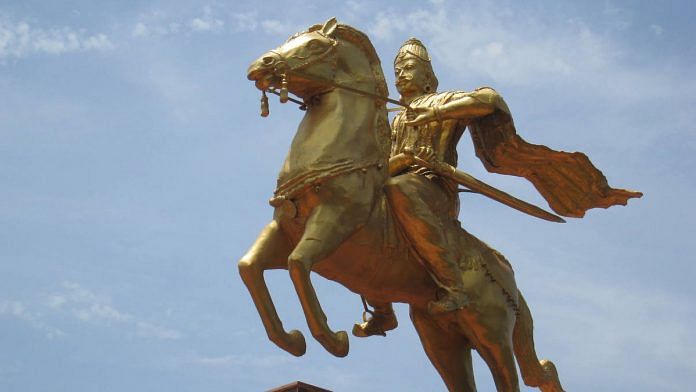Kancheepuram: A delegation sent to China by the great Chola emperor Rajaraja over trade relations 1,000 years ago, a Shiva temple in China and use of Chinese umbrellas centuries ago shed light on ancient links between Tamil Nadu and the dragon land.
As the second informal summit between Prime Minister Narendra Modi and Chinese President Xi Jinping is set to kick off at Mamallapuram near here on October 11, there is a renewed interest on Tamil Nadu’s ties with China.
Asked about Tamil Nadu’s ancient links to China, noted archaeologist S Ramachandran said the Tamil people had a long history of links with the dragon nation.
“During the reign of the Song dynasty (960-1279), Raja Raja Chola the Great sent a delegation of emissaries to China by 1014 following a representation from the Chinese rulers, seeking trade ties,” he told PTI.
There are several sources, including a 14th century Chinese reference in support of the Chola king’s delegation to China 1,000 years ago, the archaeologist, who was formerly with the Tamil Nadu Government Archaeology Department, said.
The Thirukaneeswaram inscriptions in China belonging to the 14th century speaks of a Shiva temple near the Canton port area in the dragon nation, he said.
These inscriptions were documented by T N Subramaniam in the South Indian Temple Inscriptions series published by the Government Oriental Manuscripts Library in 1957, Ramachandran, who is also a Tamil scholar, said.
This Shiva temple in China was named after a Mongolian king of that period, called Segasai Khan in the Tamil portion of the inscription and the temple was named “Khaneeswaram,” after him, he said.
That Chinese Shiva temple was consecrated by Thava Chakravarthi, a Tamil monk.
A Buddhist vihara called “Cheena Koil” (in Tamil it meant a Chinese temple) existed at Nagapattinam upto the 15th century and it was an indication of the Chinese influence on Buddhism in Tamil Nadu those days, he said.
The remains of that ancient Buddhist temple was documented by the Dutch East India Company personnel during the early 19th century, he added.
An inscription found in the Shiva temple in Avinashi in Tirupur district (Circa 13th Century) has reference to “Cheena Kudai” or Chinese umbrellas made of imported white Chinese silk. In Tamil, such umbrellas were commonly known as “Venkotra Kudai.”
A copper plate inscription found in the Courtallam Shiva temple speaks of “Cheenan” denoting the Chinese, Ramachandran, who is an expert in epigraphy, said.
The word Cheenan was used while referring to “Manu uru sattai,” a type of dress in a particular shape, hinting at a probable link between “the cloth, the Chinese and Tamil Nadu.”
“There is even a view that Sangam age (2000 years ago) king Athiyaman’s ancestors introduced sugarcane from China.
The Tamil word Cheeni, meaning sugar, may also have a Chinese connection,” Ramachandran said.
Citing the “Kattabomman Kathai Padal” folk verses on legendary ruler Kattabomman, who fought the British, the archaeologist said it has several references to Chinese explosives and lenses.
“Archaeological and literary evidence on ancient Tamil-Chinese link continues till early 19th century,”he said.
“It is believed that Bodhi Dharma, who introduced zen Buddhism, went to China from Kancheepuram,” he said.
Ramachandran is also the convener of the South Indian Social History Research Institute here.
In August 2013, a senior ASI official had told PTI that expeditions of Indians to far away places had always been a subject of interest, adding ASI would to like to research such ancient links.
Years ago there had been reports of Hindu temples in China and its links to South India and Tamil traders dating to the 13th century.
Historians believe the Chedian shrine may have been a network of more than 12 Hindu temples or shrines, including two grand big temples built at Quanzhou and surrounding villages in China by Tamil traders who lived here during the Song and Yuan (1279-1368) dynasties.
Also read: This ‘seed warrior’ is collecting & preserving India’s rare, indigenous rice species



